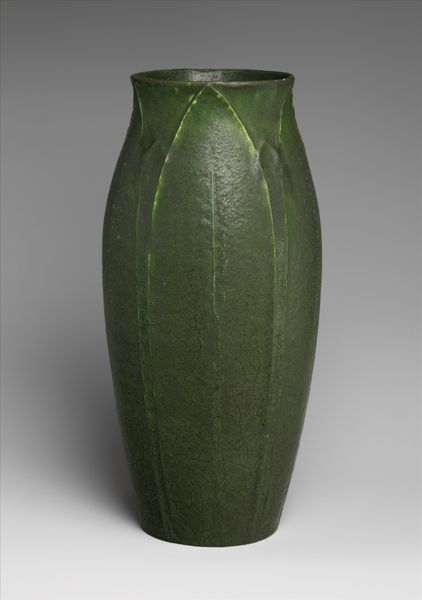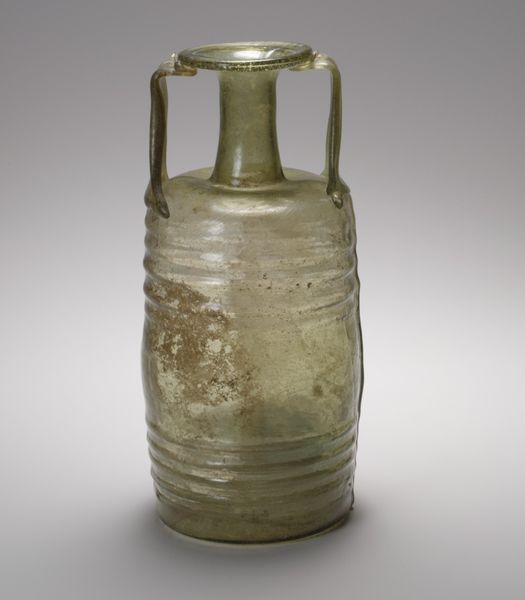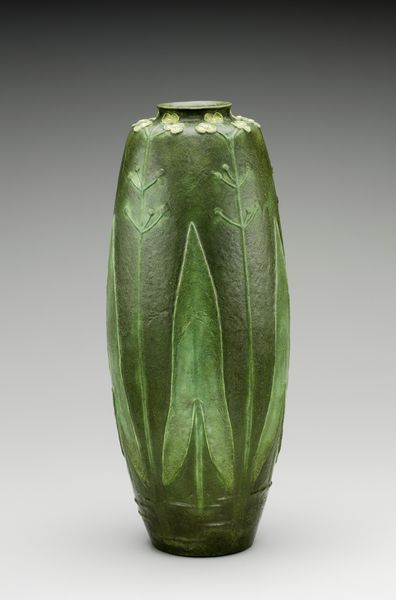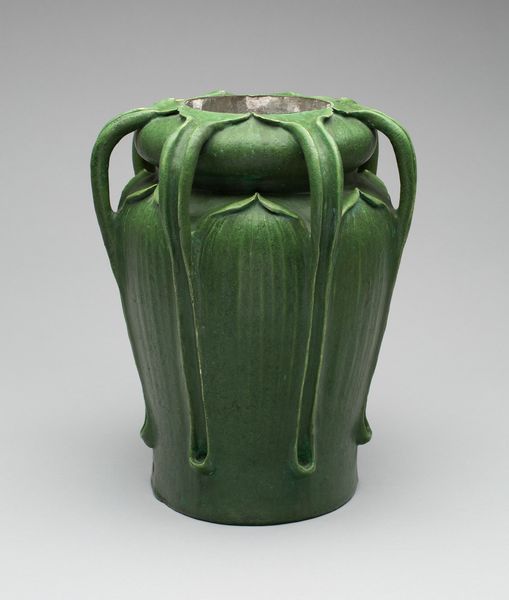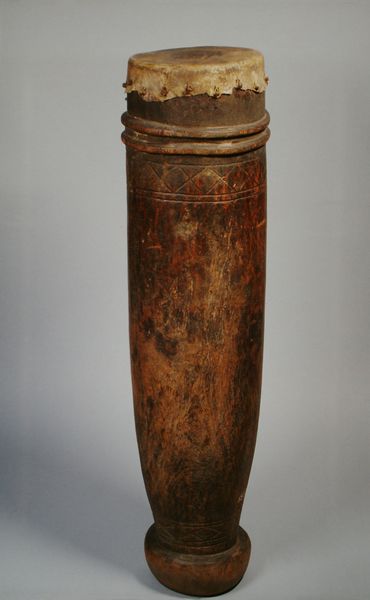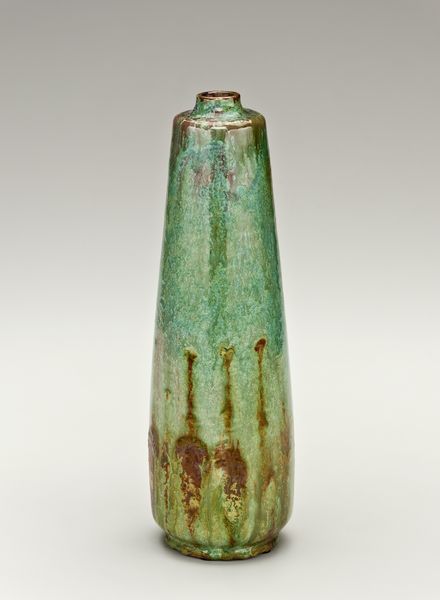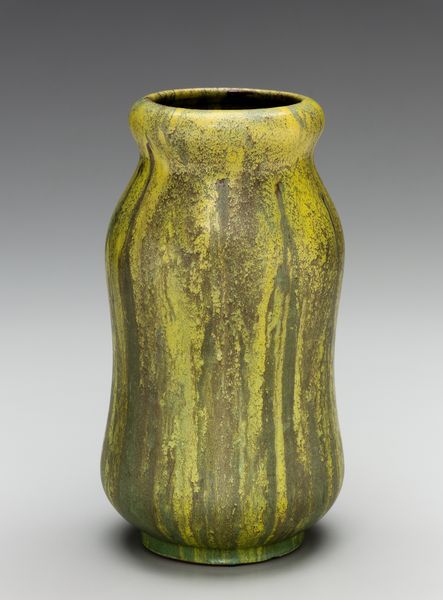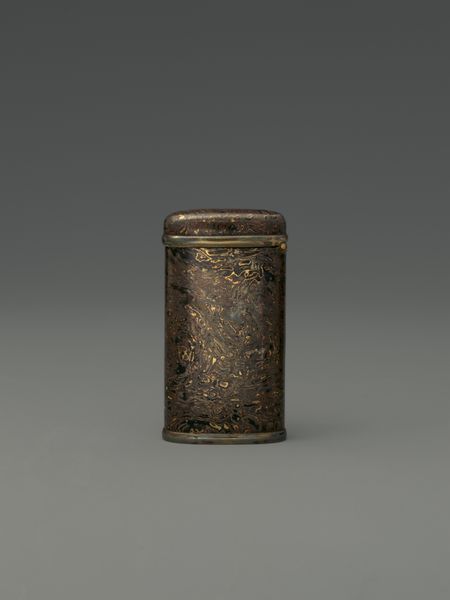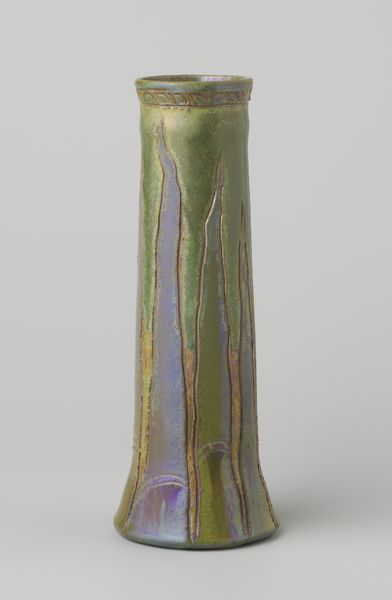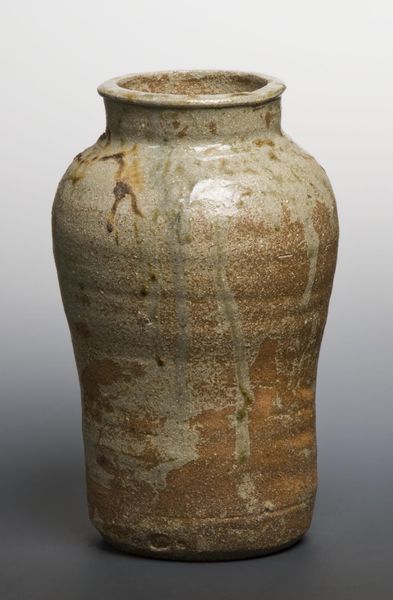
ceramic, earthenware, sculpture
#
organic
#
art-nouveau
#
ceramic
#
form
#
earthenware
#
stoneware
#
sculpture
#
ceramic
Dimensions: H. 7 1/2 in.
Copyright: Public Domain
Curator: Welcome. We’re standing before a ceramic vase created by William J. Walley, dating from sometime between 1893 and 1923. Editor: It's quite striking, isn’t it? The texture and form evoke this really compelling tension between controlled design and natural asymmetry, the dark green against the mottled brown glaze suggesting the tension. Curator: Yes, and I find the interplay between design and natural forms a key characteristic of the Art Nouveau movement, and Walley’s creation and display are evidence of the rising appreciation of functional art in bourgeois American households at the time. Consider also the social implication, and how displaying refined, handcrafted work was seen as an intellectual statement. Editor: Absolutely. This isn’t just a vase; it's a testament to the skill of the hand and the artistry in the applied glazes. This earthy palette—the particular blend used during the glazing process of ceramic work like this interests me. What source clay did Walley use, and where did he obtain his glazes? Curator: Unfortunately, while Walley was an advocate of American ceramics, not much remains of documentation to speak of. The organic aesthetic of this vase does lend itself to a narrative of self-sufficiency that dovetails nicely with that early progressive era interest in locally sourced raw materials and a push toward reform. Editor: You’re right, there's something innately honest in how the raw materials appear to be celebrated, even in this finished piece. It highlights how, with artistry, common clay from the earth can be elevated. The scale also affects the user experience – this would demand a large floral arrangement that complements its presence. Curator: And its visibility in the domestic space broadcast the refined tastes and perhaps progressive political leanings of its owners, becoming a signifier of cultural capital and access within certain social circles. Editor: Fascinating how a simple object like a vase could become such a rich reflection of its time. Considering how different audiences engage with similar pottery and ceramics today would yield quite varied results... Curator: Precisely, the continuous renegotiation of value in the art world is an area ripe for discovery. Editor: And what begins in earth transforms through labor and skill.
Comments
No comments
Be the first to comment and join the conversation on the ultimate creative platform.
